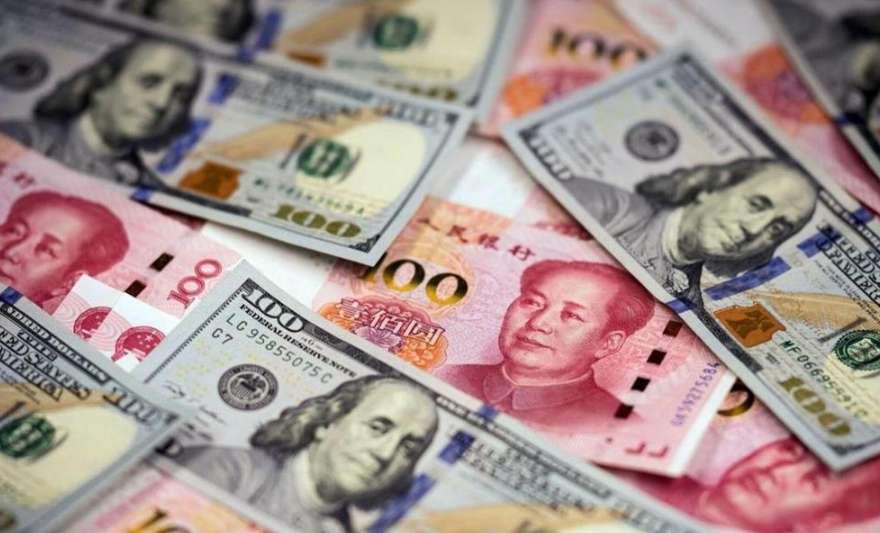Strong Dollar Seen Boosting Chinese Bonds
Advertisements
The year 2023 has witnessed a significant surge in the value of the U.S.dollar,with the dollar index climbing an impressive 18%.This has led to substantial depreciation in major global currencies against the dollar,with some currencies hitting multi-decade lows.Such shifts in currency valuation can have profound impacts on international trade and investment,as various stakeholders,including governments and corporations,scramble to adjust their strategies in response to the evolving economic landscape.
But what does this mean for the Federal Reserve's monetary policy,particularly in regards to interest rates?As the Fed has raised interest rates six times this year,the question looms: will the dollar continue its upward trajectory?Moreover,how will these developments influence the Chinese yuan?
The mechanisms driving the dollar's rise
The Federal Reserve's decisions regarding interest rates primarily affect the dollar's valuation through three distinct channels:
Firstly,there’s the asset allocation pathway.The increase in interest rates tends to augment the yield on dollar-denominated assets,making them more attractive to global investors.This,in turn,drives up the demand for dollars,contributing to an increase in the dollar's value.
Secondly,the market expectations pathway is crucial.Surprising rate hikes can enhance the dollar's value due to heightened investor confidence driven by monetary policy that seems to outpace market projections.
Lastly,there's the global risk sentiment pathway.As the Fed tightens monetary policy,slowing anticipated global growth alongside rising aversion to risks leads capital back to the United States,further bolstering the dollar.
Should we continue to observe interest rate hikes that surpass market expectations,it is plausible that the dollar will maintain its upward momentum.
Historically,the dollar's upswing often precedes and ends before the Fed’s interest rate cycle.When the Fed signals impending rate hikes,short-term U.S.Treasury yields usually begin to increase ahead of time.Once the Fed actually begins to implement rate increases,a hawkish policy environment can propel market sentiment,causing the dollar index to continue its ascent.However,as the Fed nears the end of this cycle,the "buy the rumor,sell the news" effect tends to manifest; this can lead to stabilizing or fluctuating rates for the dollar index,particularly if macroeconomic factors begin to influence evaluations.
In the face of high inflation coupled with a tightening monetary policy and a strong dollar,consumer demand has remarkably remained resilient.However,looking forward,businesses will likely grapple with an equity multiplier effect pressured by rising rates.High earnings,buoyed by robust consumer spending,may ultimately see downward adjustments in profit margins and earnings expectations.
Consequently,while third-quarter earnings reports from U.S.companies appeared largely positive,the stock market may still face potential downward adjustments.For instance,some foreign investment banks recently revised downward their growth projections for companies in the S&P 500 through 2024,predicting an 11% decline in earnings per share in the event of a U.S.economic recession.
Dynamics of the global currency market
The trajectory of the dollar inevitably influences other currencies.Since 2008,the British pound has been in a downtrend against the dollar.Notably,on July 13 of this year,the euro briefly fell below parity with the dollar,an occurrence unseen since December 2002.Since August,various factors have continuously pressured the pound downwards.With the British government announcing new tax cuts amidst growing inflation expectations, the pound even dipped below 1.04 against the dollar,coming alarmingly close to parity.
the pound even dipped below 1.04 against the dollar,coming alarmingly close to parity.
Looking ahead,the pound still has room for further decline,compounded by numerous bearish factors.We argue that parity itself is not an absolute support level.Weak momentum in global economic growth,persistent inflation,and restrictive policies from central banks,alongside frequent geopolitical turbulence,all contribute to a challenging environment for the pound to strengthen.Furthermore,uncertainties surrounding the UK and European economies,including growth prospects and the stability of the British government,represent additional headwinds for the pound.The lingering UK debt crisis also remains a concern,wherein any trepidation regarding repayment capabilities could lead to further declines in the pound's value.
The strong dollar has triggered a sharp depreciation of the yuan against the dollar,with onshore exchange rates at one point dipping below 7.3.However,compared to other currencies,the yuan has demonstrated relative stability.Since 2022,the yuan has experienced notable volatility,yet the CFETS yuan index has remained around early-year levels,even appreciating by 3.5% against the euro and 7.8% against the pound this year.
With the fundamentals of the Chinese economy gradually stabilizing,coupled with more effective pandemic control measures and systemic economic stabilization efforts,the immediate future should see the yuan's exchange rate against the dollar stabilize,making prolonged unidirectional depreciation unlikely.
Undeniably,China’s economic growth has slowed this year,yet international investors remain cognizant of the long-term opportunities within the Chinese market.The latest data indicates that foreign holdings of yuan-denominated bonds totaled approximately 3.4 trillion renminbi (RMB) by the end of October,a decrease from the historical peak of 4.1 trillion RMB at the start of the year.The dramatic fall mainly occurred in the second quarter of this year,causing fluctuations in the yuan's exchange rate.While the yield differential between Chinese and U.S.bonds has pressured the overall yield of the Chinese bond market,the low correlation between China and global markets positions it as a "safe haven" for international investors seeking to diversify risk.Recently,signs indicate a moderation in outflows from the bond market,with some trading days even witnessing net inflows.Over the medium term,the fundamental economic conditions and financial landscape may well benefit market sentiment and confidence.Looking to the future,we believe the scale of foreign holdings of yuan-denominated bonds will rebound as the Chinese economy improves.
Leave a Reply